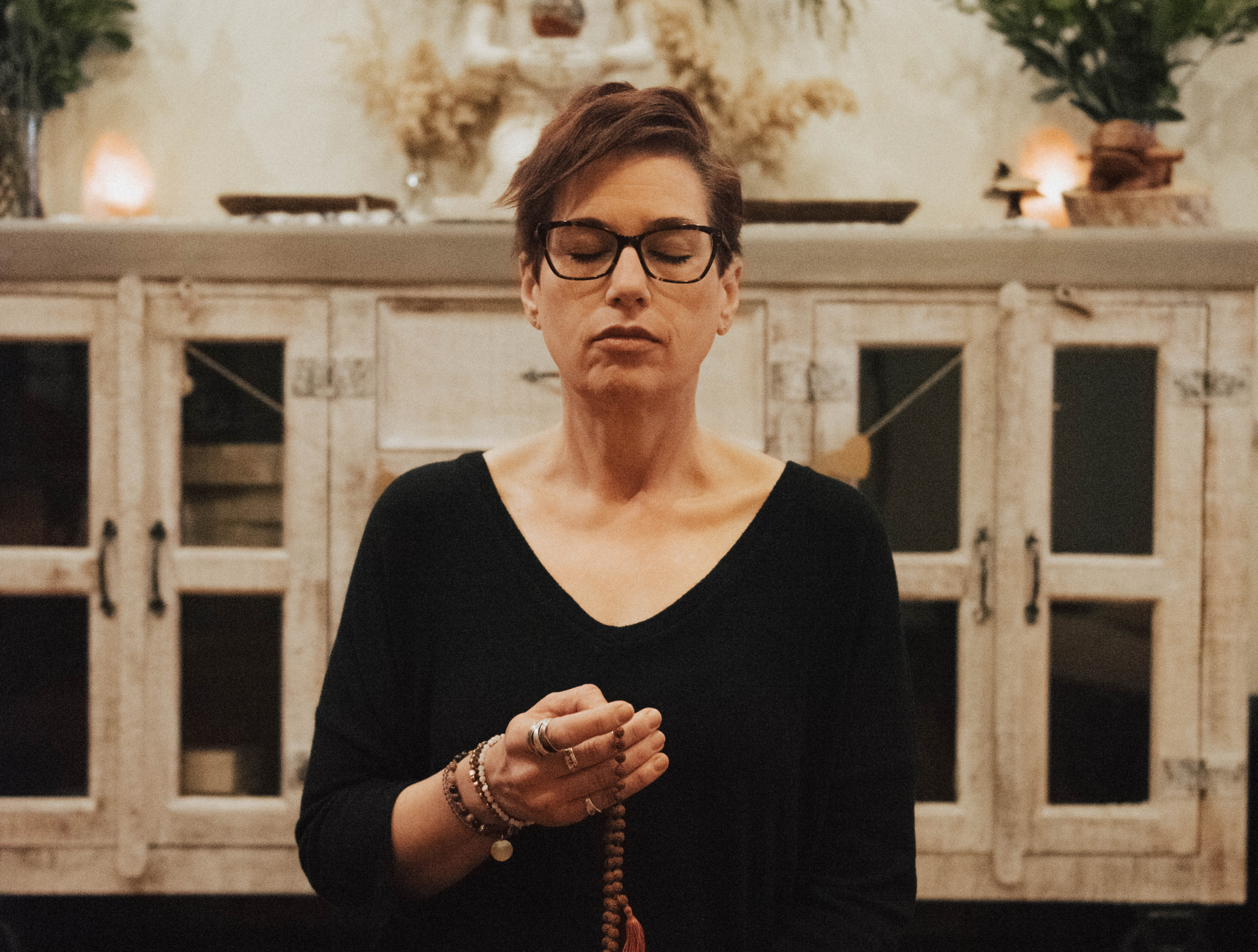This entry was posted on Apr 30, 2025 by Charlotte Bell.

We’ve all seen idealized images of meditation. Perhaps it’s a young woman on a deserted beach, hands in a meditation-friendly mudra, enjoying a sunset. Or maybe it’s an image like the one at the top of this post—a person with serene countenance, fingering mala beads in deep contemplation. It’s true that meditation can be peaceful. But sometimes, it’s marked by cascading thoughts and memories, raw emotions and/or physical discomfort. It’s important to remember that in mindfulness practice, the latter experience doesn’t mean you’re doing something wrong. Those thoughts, memories, emotions and discomforts are simply what is present. They are, in a very real sense, what there is to be mindful of. But when these experiences become overwhelming, mindfulness has a solution: a breath awareness practice designed to calm the body and mind.
When I teach mindfulness courses, many new meditators doubt their ability to practice. They’ll say, “Every time I sit down to meditate, my mind goes crazy. My thinking amps up more than ever.” To that, I tell them that they’re not thinking more when they meditate; they’re instead observing for the first time what’s been happening in their minds all along. I explain that mindfulness is not about stopping your thoughts. It’s about dealing with your thoughts in a skillful way.
We can be mindful of the process of thinking, instead of getting caught up in the content of our stories, memories, worries and dramas. Mindfulness of thinking is actually one of the four foundations of mindfulness. But sometimes, we need to slow the process down so that we can be with the thinking process with more equanimity. That’s where the breath awareness practice I’m about to describe can be invaluable.
Breath Awareness to the Rescue
On an 18-day retreat at Spirit Rock Meditation Center a few years ago, this breath awareness technique helped me navigate what I can only describe as a “massive memory dump.” Starting in the wee hours of the morning one night, memories began flowing, completely uncontrolled, at a pace I didn’t think possible. Life events I hadn’t thought of in decades were flashing through my consciousness nonstop, and at warp speed. None of it was traumatic, but it became exhausting after a while.
After several hours of experiencing this memory dump, I remembered a breath awareness practice that I thought might be able to slow things down a bit. It’s a very simple practice that I’d heard on an instruction CD by author/Insight Meditation teacher Joseph Goldstein. After just a few minutes of practice, the whole rapid-fire movie slowed down, and I felt a deep sense of calm.
How to Practice Calming Breath Awareness
- Gather your props: a Meditation Cushion and Zabuton. If you don’t have a Zabuton, you can place your Meditation Cushion on top of a couple folded Yoga Blankets for extra padding under your knees or ankles.
- Relax into your sitting position and tune into your breathing. Notice where you feel your breath most clearly—nostrils, chest or abdomen—and let your attention rest there. Feel the process of breathing, noting each inhalation and exhalation.
- Now, as you inhale, make a gentle suggestion to calm the body and calm the mind. Do the same on your next exhalation. When I practice this, I simply say to myself “calm” each time I inhale and “calm” each time I exhale.
- Feel your body/mind receiving this suggestion with each inhalation and exhalation.
- Practice this as long as you like. You can practice for a few rounds at the beginning of your meditation, or you can practice it for the entire duration.
This breath awareness practice may seem too simple to be effective, but I’ve found it to be an essential tool in my meditation toolbox. You can practice it any time—when you’re feeling impatient while sitting at a stoplight, when you’re in the midst of a challenging situation, when you’re feeling stress or anxiety, when you’re lying awake at night, and of course, when your mind is wandering during meditation. You can practice it at the beginning or end of your yoga practice. It’s an especially nice way to begin your Savasana (Final Relaxation).
About Charlotte Bell
Charlotte Bell discovered yoga in 1982 and began teaching in 1986. Charlotte is the author of Mindful Yoga, Mindful Life: A Guide for Everyday Practice and Yoga for Meditators, both published by Rodmell Press. Her third book is titled Hip-Healthy Asana: The Yoga Practitioner’s Guide to Protecting the Hips and Avoiding SI Joint Pain (Shambhala Publications). She writes a monthly column for CATALYST Magazine and serves as editor for Yoga U Online. Charlotte is a founding board member for GreenTREE Yoga, a non-profit that brings yoga to underserved populations. A lifelong musician, Charlotte plays oboe and English horn in the Salt Lake Symphony and folk sextet Red Rock Rondo, whose DVD won two Emmy awards.

